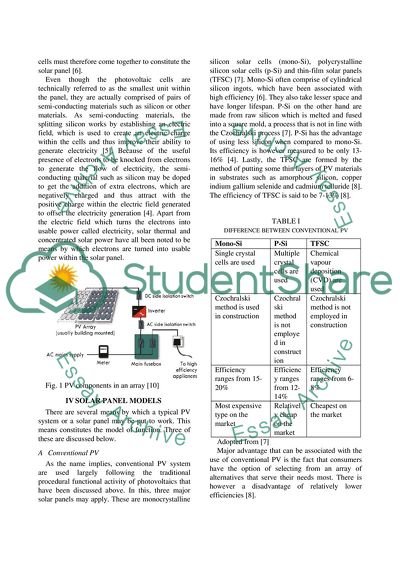Cite this document
(Photovoltaic Efficiency: Solar Panel Article Example | Topics and Well Written Essays - 1750 words, n.d.)
Photovoltaic Efficiency: Solar Panel Article Example | Topics and Well Written Essays - 1750 words. https://studentshare.org/engineering-and-construction/1853463-potovoltaic-efficiency-solar-panels
Photovoltaic Efficiency: Solar Panel Article Example | Topics and Well Written Essays - 1750 words. https://studentshare.org/engineering-and-construction/1853463-potovoltaic-efficiency-solar-panels
(Photovoltaic Efficiency: Solar Panel Article Example | Topics and Well Written Essays - 1750 Words)
Photovoltaic Efficiency: Solar Panel Article Example | Topics and Well Written Essays - 1750 Words. https://studentshare.org/engineering-and-construction/1853463-potovoltaic-efficiency-solar-panels.
Photovoltaic Efficiency: Solar Panel Article Example | Topics and Well Written Essays - 1750 Words. https://studentshare.org/engineering-and-construction/1853463-potovoltaic-efficiency-solar-panels.
“Photovoltaic Efficiency: Solar Panel Article Example | Topics and Well Written Essays - 1750 Words”. https://studentshare.org/engineering-and-construction/1853463-potovoltaic-efficiency-solar-panels.


